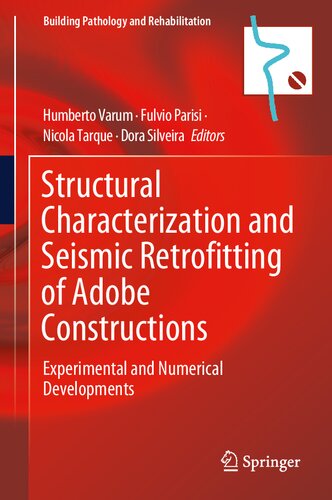

Most ebook files are in PDF format, so you can easily read them using various software such as Foxit Reader or directly on the Google Chrome browser.
Some ebook files are released by publishers in other formats such as .awz, .mobi, .epub, .fb2, etc. You may need to install specific software to read these formats on mobile/PC, such as Calibre.
Please read the tutorial at this link: https://ebookbell.com/faq
We offer FREE conversion to the popular formats you request; however, this may take some time. Therefore, right after payment, please email us, and we will try to provide the service as quickly as possible.
For some exceptional file formats or broken links (if any), please refrain from opening any disputes. Instead, email us first, and we will try to assist within a maximum of 6 hours.
EbookBell Team

4.7
26 reviewsThis book provides the reader with a review of the most relevant research on the structural characterization and seismic retrofitting of adobe construction. It offers a complete review of the latest research developments, and hence the relevance of the field.
The book starts with an introductory discussion on adobe construction and its use throughout the world over time, highlighting characteristics and performance of adobe masonry structures as well as different contributions for cultural heritage conservation (Chapter 1). Then, the seismic behaviour of adobe masonry buildings is addressed, including examples of real performance during recent earthquakes (Chapter 2). In the following chapters, key research investigations on seismic response assessment and retrofitting of adobe constructions are reviewed. The review deals with the following issues: mechanical characterization of adobe bricks and adobe masonry (Chapters 3 and 4); quasi-static and shaking table testing of adobe masonry walls and structures (Chapters 5 and 6); non-destructive and minor-destructive testing for characterization of adobe constructions (Chapter 7); seismic strengthening techniques for adobe constructions (Chapter 8); and numerical modelling of adobe structures (Chapter 9).
The book ends with Chapter 10, where some general conclusions are drawn and research needs are identified. Each chapter is co-authored by a group of experts from different countries to comprehensively address all issues of adobe constructions from a worldwide perspective.
The information covered in this book is fundamental to support civil engineers and architects in the rehabilitation and strengthening of existing adobe constructions and also in the design of new adobe buildings. This information is also of interest to researchers, by providing a summary of existing research and suggesting possible directions for future research efforts.